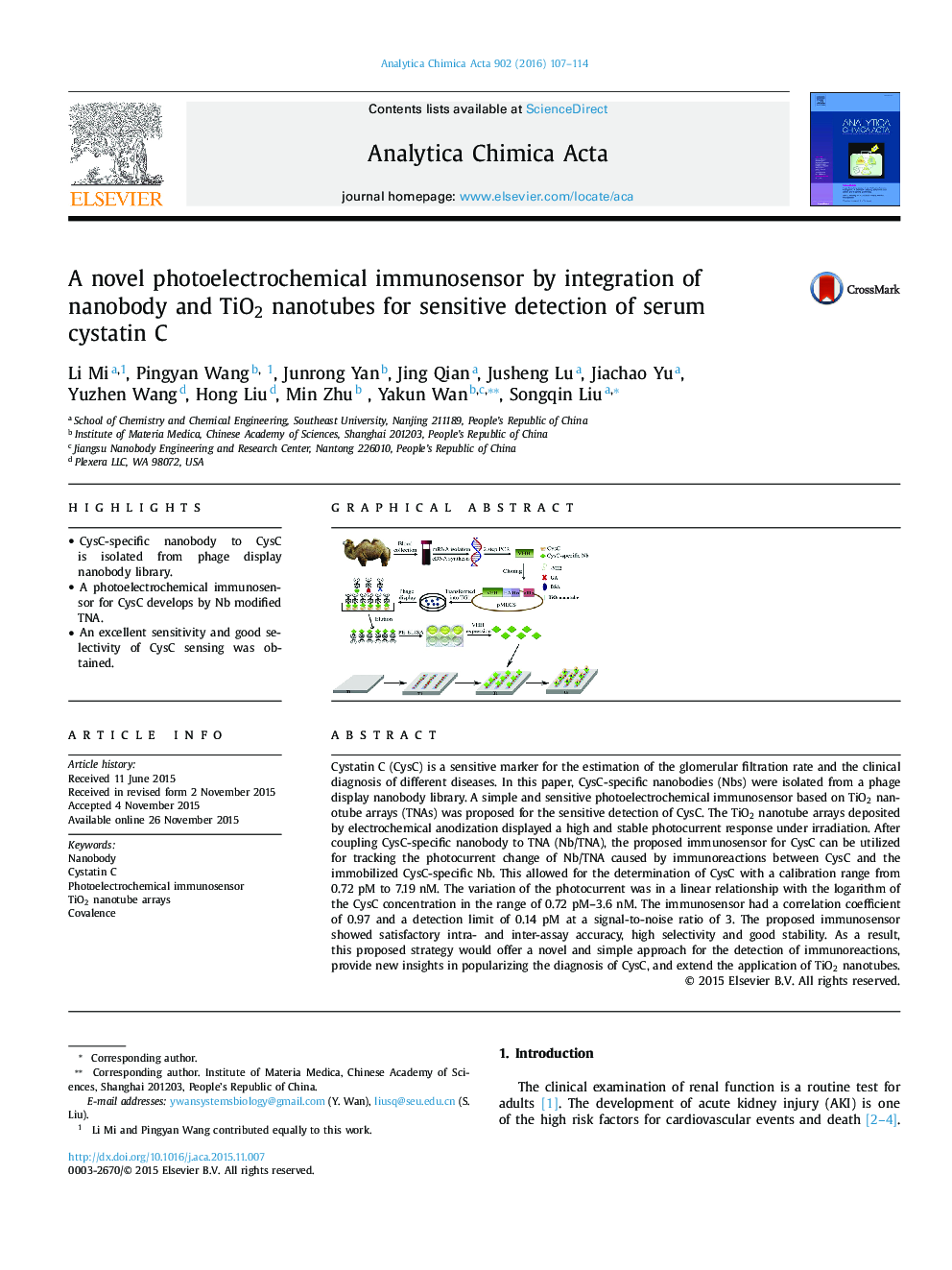| Article ID | Journal | Published Year | Pages | File Type |
|---|---|---|---|---|
| 1163148 | Analytica Chimica Acta | 2016 | 8 Pages |
•CysC-specific nanobody to CysC is isolated from phage display nanobody library.•A photoelectrochemical immunosensor for CysC develops by Nb modified TNA.•An excellent sensitivity and good selectivity of CysC sensing was obtained.
Cystatin C (CysC) is a sensitive marker for the estimation of the glomerular filtration rate and the clinical diagnosis of different diseases. In this paper, CysC-specific nanobodies (Nbs) were isolated from a phage display nanobody library. A simple and sensitive photoelectrochemical immunosensor based on TiO2 nanotube arrays (TNAs) was proposed for the sensitive detection of CysC. The TiO2 nanotube arrays deposited by electrochemical anodization displayed a high and stable photocurrent response under irradiation. After coupling CysC-specific nanobody to TNA (Nb/TNA), the proposed immunosensor for CysC can be utilized for tracking the photocurrent change of Nb/TNA caused by immunoreactions between CysC and the immobilized CysC-specific Nb. This allowed for the determination of CysC with a calibration range from 0.72 pM to 7.19 nM. The variation of the photocurrent was in a linear relationship with the logarithm of the CysC concentration in the range of 0.72 pM–3.6 nM. The immunosensor had a correlation coefficient of 0.97 and a detection limit of 0.14 pM at a signal-to-noise ratio of 3. The proposed immunosensor showed satisfactory intra- and inter-assay accuracy, high selectivity and good stability. As a result, this proposed strategy would offer a novel and simple approach for the detection of immunoreactions, provide new insights in popularizing the diagnosis of CysC, and extend the application of TiO2 nanotubes.
Graphical abstractFigure optionsDownload full-size imageDownload as PowerPoint slide
